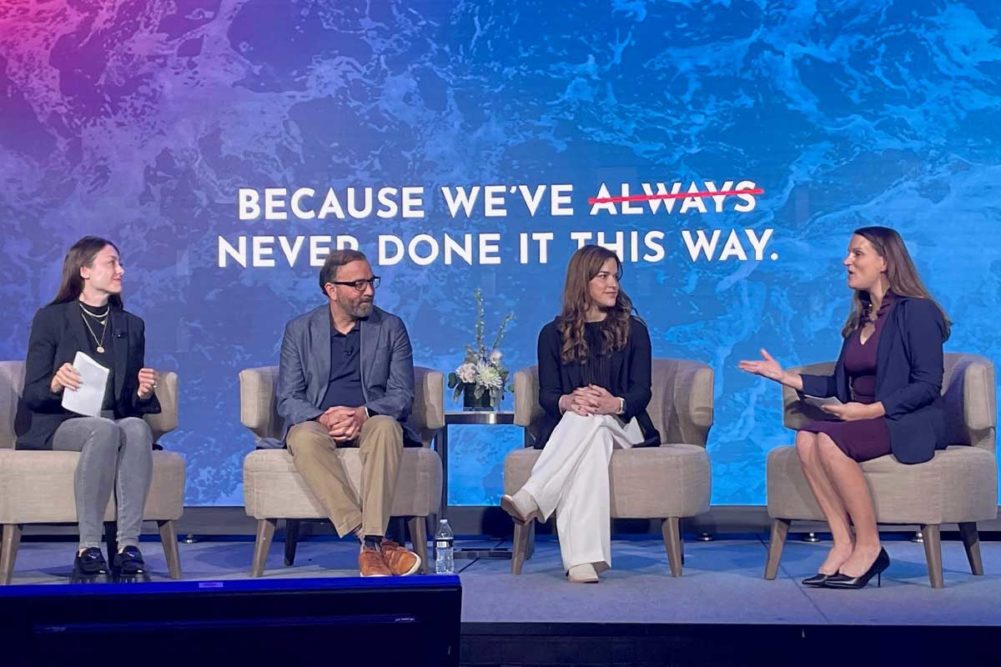AMELIA ISLAND, FLA. — With grocery stores accounting for only 39.4% of retail food sales, bakers need to explore various ways to more effectively reach consumers who are increasingly shopping online and at mass merchandisers, club stores, convenience stores and specialty stories like Trader Joe’s for fresh-baked goods.
This omnichannel shopping behavior accounts for a greater amount of sales of fresh foods, especially baked goods, than in the past, noted Jonna Parker, principal II/team lead, fresh foods at Circana, formerly IRI and The NPD Group.
“What that means, when you think about the boundaryless consumer, is a changing of the guard,” she said. “People have more choice than they ever had in any aspect of our commercial life.”
Perhaps the most effective way to reach these consumers today is through online promotion and marketing. That was the key takeaway from a panel discussion on “Taking a Boundaryless Approach to the Consumer” during the American Bakers Convention, held March 26-29 in Amelia Island, Fla.
In fact, Ms. Parker, who moderated the panel, pointed out that 70% of sales — 30% of online purchases and 40% of offline sales — will be digitally influenced within the next five years.
“The reality, though, is that the retail landscape is massively changing,” she said. “We can’t be all things to all people at all times.”
Ms. Parker said that ecommerce, especially following the pandemic, is here to stay and continues to grow faster than brick-and-mortar grocery stores. Because products like fresh bread and rolls are found in a large percentage of grocery purchases, they are significantly influenced by digital media.
Omar Haque, vice president and general manager of omnichannel, Bimbo Bakeries USA, said the Horsham, Pa.-based company fully understands the impact digital marketing has on consumer purchasing. He described baked goods, specifically bread, as a “basket builder” for purchasing other ingredients, such as protein, cheeses and other key ingredients that make up sandwiches.
The goal, he added, is to create a “frictionless experience” that makes it easy for consumers, no matter where they’re buying their baked goods.
“We want to be obsessed about the shoppers, regardless of where they shop,” Mr. Haque said. “It doesn’t matter.”
Alicia Kuri, senior manager, ecommerce category and shopper insights, Nestlé Coffee Partner, noted that 23% of coffee sales come from online sales and called the category the “canary in the coal mine” when it comes to the future of food and beverage purchases in a digital world.
Coffee serves as a trip driver, which can then, in turn, lead to building baskets with affinity items such as baked sweet goods.
Millennial and Generation Z households are most impacted by digital marketing. Millennials, many of whom have young children, are driven by reading reviews and seeking out deals, while Generation Z looks to consume brand and retailer content for fun and inspiration, she added.
Molly Hjelm, group director, advertising, Kroger Precision Marketing, 84.51°, Cincinnati, talked about the value exchange inherent in the Kroger Loyalty Card, which enables Kroger to deliver personalized experiences for its shoppers wherever they are engaging digitally, and then hold media exposure accountable to sales.
She encouraged bakers to shore up their product detail pages to best position themselves in organic search results, to invest in paid search, and to advertise across the full funnel to bring additional shoppers into retail.
“If you’re not one of those top results that come up in the endless aisle, you’re going to get beat out by a competitor,” she said.






